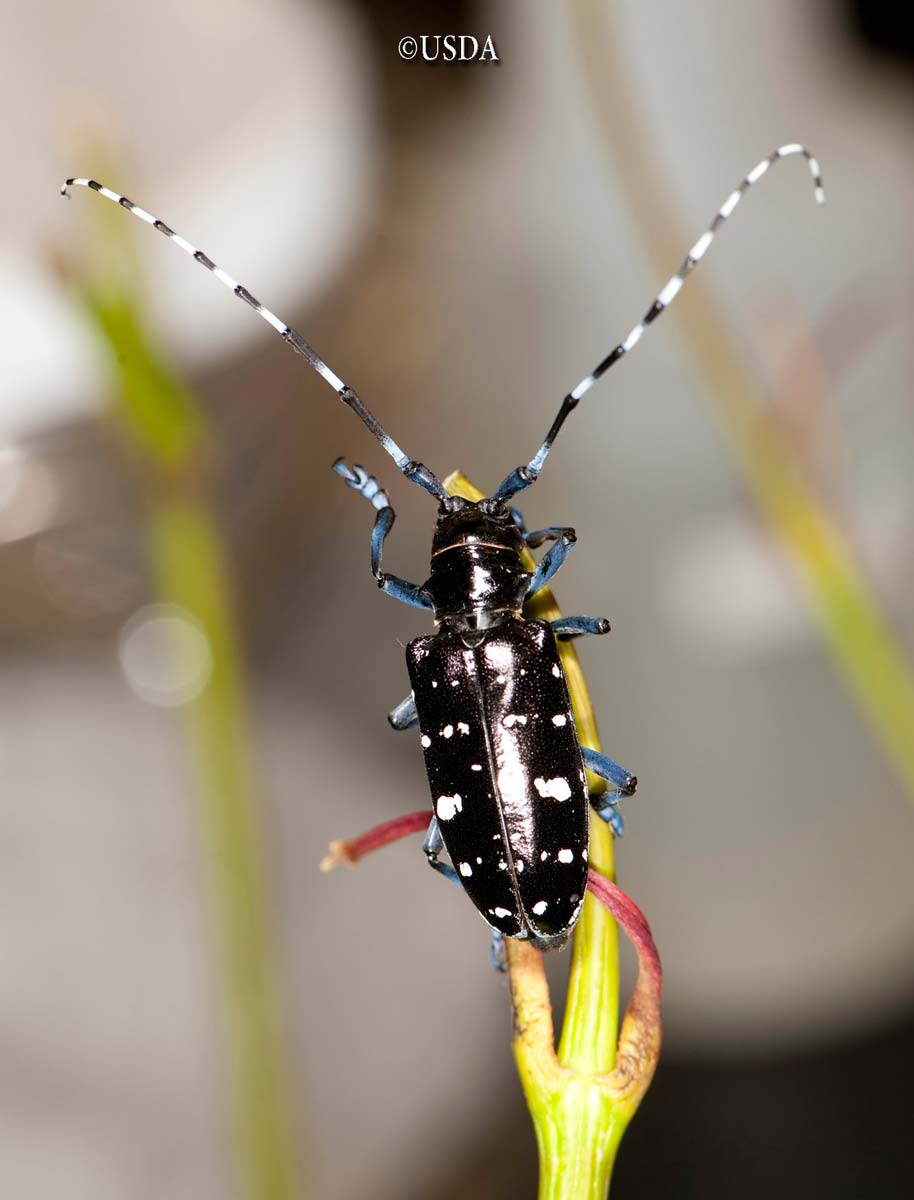
In their larval stage, numerous types of beetles and some clear wing moths tunnel beneath bark or bore into live wood. Some borers tunnel deep into a branch, making it weak enough to snap in a storm; others tunnel just below the bark, girdling a tree. In many cases, a pest’s tunneling pattern is distinctive enough to provide positive identification. Borers tend to attack trees stressed by poor growing conditions or wounds. If you see holes bordered with sawdust, excrement, or sap, you probably have an infestation on your hands. Some species attack below the soil line; in these cases, the evidence may be at the base of the tree.
Target: Many trees and shrubs.
Damage: Wilting, yellowing, premature leaf drop, and branch dieback occur. Severely infested plants may die: tunneling provides entry for infections and bark beetles themselves often spread diseases as they tunnel.
Life cycle: Bark beetles bore beneath bark and lay eggs in tunnels; moths lay eggs around wounds and on or at the base of host plants. The larvae of both kinds of insects tunnel, feed, and pupate inside the plant, then emerge as adults. Most of these pests overwinter live in a dormant state.
Notes: Prevention is the best control. Provide good growing conditions and place barriers around trees to protect them from injury. To hand-control worms, ram wire into borer holes to kill the occupants.


